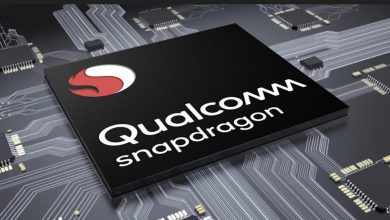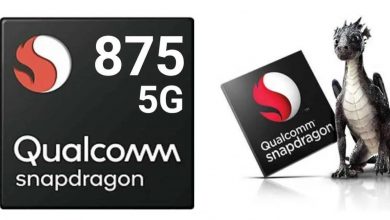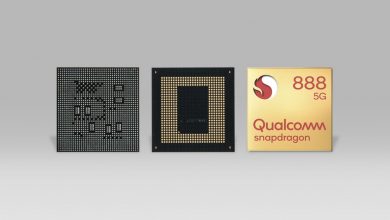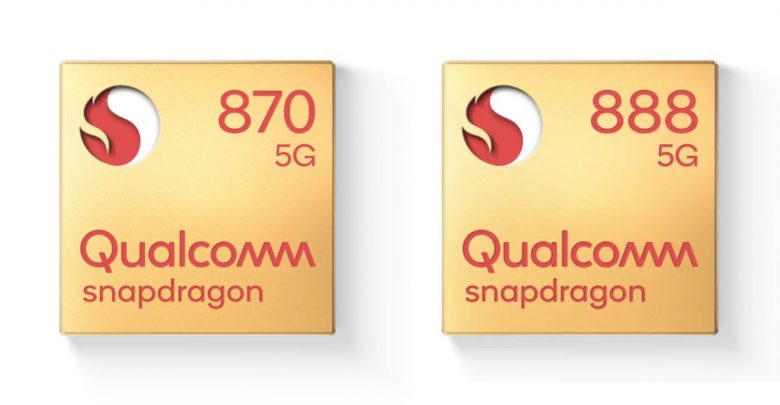
Qualcomm and TSMC tried really hard to squeeze out as much as they could from the 7nm process node. They seem to have succeeded so far. The Snapdragon 870 is basically a rebranded 865 with higher clocks. No design changes, no new processors, just a higher single core clock of their main core compared to their older flagship, 865+. Basically, this would be termed as an 865++ just like Intel’s 14nm+++
Snapdragon 870 is just a rebranded 865+
The main core is clocked at 3.2GHz which makes a 3% improvement compared to the older 865+. Unfortunately, Qualcomm doesn’t say anything about the other cores, so let’s assume all the other cores are the same as the Snapdragon 865. That means the three A77 cores are clocked at 2.4Ghz and four A55 cores at 1.8Ghz. The good thing is that, just like on the 865+ model, it sounds like there is still the option for Qualcomm’s latest connectivity chip, giving you the possibility of an 870 with Wi-Fi 6E.
The Snapdragon 870 doesn’t just have similar spec as the 865. Qualcomm describes the Snapdragon 870 as “building upon the success of Snapdragon 865 and 865 Plus” indicating it’s another plain clock bump with no design changes. The 865+ and 870 data-sheets clearly look identical. If these are the exact same chip, this is an odd decision since the Snapdragon 865 SoC design was a stopgap design. It was created to rush 5G out to consumers as quickly as possible, and it came with the 4G/5G modem on a separate chip. Since the 865 was a big, expensive two-chip solution, you would think Qualcomm would want to let it die as quickly as possible. If we assume the previous-generation chips are dead, the 870 is now the only chip in Qualcomm’s modern lineup to feature a 4G and 5G modem on a separate chip. Every Qualcomm smartphone SoC more expensive than this has an onboard 4G/5G modem, and every SoC cheaper than this has an onboard modem. Heck, onboard 5G now goes all the way down to the Snapdragon 4 series.
Snapdragon 870 main features list
The Snapdragon 870 still uses Kryo 585 cores, which are based on ARM’s Cortex-A77 with some in-house tweaks. The Snapdragon 888 CPU is based on the newer Cortex-X1 and A78 instead, so while it runs at lower frequencies (2.84 GHz for the X1), there’s more to the performance story. We’ll have to wait for the first benchmarks to see how all these chips compare, though.
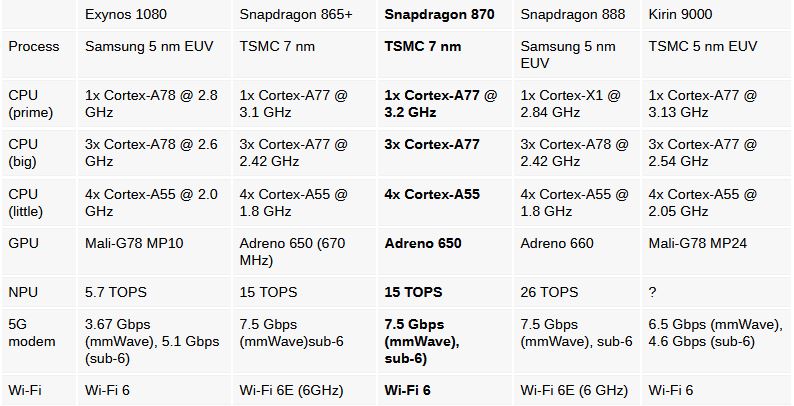
The Adreno 650 GPU makes a comeback, but it’s not clear if it received a clock boost of its own and, if not, whether it’s running at the 865 frequency (587 MHz) or 865+ (670 MHz). The Hexagon 698 and the Tensor Accelerator deliver the same 15 TOPS as the two 865 chips so that definitely did not get a boost.
The display driver can run 1440p class panels at up to 144Hz (or 4K at 60 Hz) and supports HDR10+ (Rec. 2020 color gamut). The Spectra 480 ISP is unchanged as well, with support for sensors up to 200 MP, 8K video capture at 30 fps (and 4K at 120 fps), high dynamic range videos using the HDR10+ and Dolby Vision standards.
Similarly, the FastConnect 6800 system appears to be the same. It supports Wi-Fi 6 (up to 1.77 Gbps) and Bluetooth 5.2 with aptX Voice and Adaptive. Note that the 865+ used the slightly upgraded FastConnect 69000, which offered Wi-Fi 6E.
There’s no onboard 5G modem, instead the chipset will be paired with an external Snapdragon X55 with sub-6 and mmWave support (up to 7.5 Gbps downlink speeds). Only the Snapdragon 888 has an integrated 5G modem, and that’s the Snapdragon X60 modem.
The Snapdragon 870 is said to be used in phones by Motorola, OnePlus, Oppo, Xiaomi and iQOO. Motorola says it will launch its phone “soon”, but there are no exact dates for any of the upcoming devices.
Snapdragon 888 the flagship: Is it worth getting it over the 870?
But coming to the 888, and it’s thermal issues which cause throttling after a while due to the temperature increase, it would be advisable to not purchase any 888 device at the moment. It may be due to the inefficient ARM X1 core or due to the 5nm process node. Either way, Youtube user Mrwhosetheboss has put out a detailed explanation and testing of the Mi 11 comparing it with the MI 10T and Kirin 9000’s Mate 40 Pro.
But hold your horses. The heating issues could be the poor passive cooling system on the MI11. Who knows? New phones with the Snapdragon 888 could have the thermal issues fixed with a few extra copper radiators. It’s too early to speculate, and way too early to compare just one phone.
So, are you ready to buy a phone with the new 870? Or will you get a phone with the flagship 888? Do let us know in the comments below.

